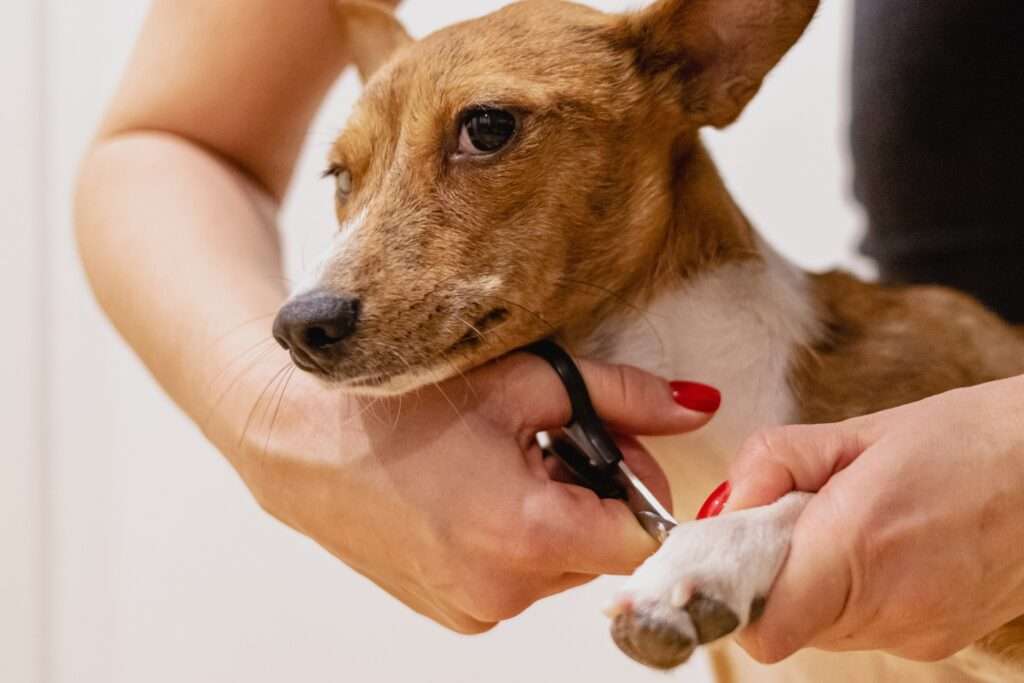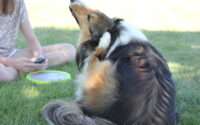How Long Does Dog Grooming Take? The Eye-Opening Truth Revealed!
Dog grooming is an essential part of maintaining your furry friend’s health and happiness. Regular grooming not only keeps your pup’s coat shiny and tangle-free, but it also helps prevent skin infections and other health issues.
It’s common for pet owners to usually wonder, “How long does dog grooming take?” Unfortunately, the answer isn’t always as straightforward, since several factors can influence the grooming duration.
In this article, we’ll provide a comprehensive guide to help you understand the factors that affect grooming time, the time required for specific grooming services, and tips to reduce grooming time.
Factors Affecting the Time Required for Dog Grooming
Numerous factors can influence the duration of dog grooming sessions, such as the breed and size of the dog, length and texture of their coat, overall coat condition, the dog’s temperament, and the type of grooming necessary. Let’s examine each of these elements in greater detail.
- Size and Breed of the Dog: The size and breed of your dog can significantly affect grooming time. Smaller dogs generally take less time to groom than larger breeds. Additionally, certain breeds may require more frequent or specialized grooming, which can also impact the time required.
- Coat Type and Length: The type and length of your dog’s coat can also affect grooming time. Dogs with longer or thicker coats may require more brushing and de-shedding, which can take longer. Similarly, dogs with curly or wiry coats may require more specialized grooming techniques.
- Condition of the Coat: The condition of your dog’s coat can impact grooming time. If your dog’s coat is matted or tangled, it may take longer to brush out. Similarly, if your dog has skin irritations or infections, you may need to spend more time cleaning and medicating those areas.
- Temperament of the Dog: The temperament of your dog can also affect grooming time. Dogs that are anxious or fearful may require more time and patience to complete grooming tasks. It’s essential to take breaks and work slowly to avoid stressing out your pup.
- Type of Grooming Required: The type of grooming required can vary depending on your dog’s needs. For example, a simple bath and brush may take less time than a full grooming session that includes nail clipping, ear cleaning, and haircutting.
By taking these factors into account, you can make a more informed estimate of the time required for your dog’s grooming session. It is important to note that each dog is unique, and the time required for grooming can fluctuate based on the dog’s specific requirements and characteristics.
Time Required for Specific Dog Grooming Services
The time required for specific grooming services can vary depending on the factors mentioned above. Here’s a general idea of how long some common grooming services may take:
- Bathing and Drying: Bathing and drying can take anywhere from 30 minutes to an hour, depending on the size and coat type of your dog. Dogs with longer or thicker coats may require more time to dry.
- Brushing and De-shedding: Brushing and de-shedding can take anywhere from 15 minutes to an hour or more, depending on the coat type and condition. Dogs with heavy shedding may require more time and specialized tools.
- Haircutting and Trimming: Haircutting and trimming can take anywhere from 30 minutes to a few hours, depending on the type of cut and the size and breed of your dog. Dogs with thicker or longer hair may take longer to trim.
- Nail Clipping: Nail clipping can take anywhere from 5 to 15 minutes, depending on your dog’s size and temperament. Dogs that are anxious or uncooperative may require more time and patience.
- Ear Cleaning: Ear cleaning can take 5 to 10 minutes, depending on the dog’s ear size and condition.
- Teeth Brushing: Teeth brushing can take 2 to 5 minutes, depending on your dog’s cooperation and the condition of their teeth.
Time Required for Different Dog Breeds
The time required for grooming can also vary depending on your dog’s breed. Here’s a general idea of how long grooming may take for different dog breeds:
- Small Breeds: Small breeds like Chihuahuas, Yorkies, and Shih Tzus may take anywhere from 30 minutes to an hour for a full grooming session.
- Medium Breeds: Medium breeds like Cocker Spaniels, Bulldogs, and Australian Shepherds may take anywhere from 1 to 2 hours for a full grooming session.
- Large Breeds: Large breeds like Golden Retrievers, German Shepherds, and Standard Poodles may take anywhere from 2 to 3 hours for a full grooming session.
Keep in mind that these are general estimates, and the time required can vary depending on the individual dog and their needs. By understanding the grooming time required for your dog’s breed can help you plan your time and schedule grooming appointments accordingly.
Tips for Reducing Grooming Time

Here are some tips to help you reduce grooming time and make the process more efficient:
- Regular grooming: Frequent grooming can aid in maintaining your dog’s coat in excellent shape, which can decrease the duration of each grooming session.
- Use the right tools: Using the right grooming tools, such as brushes, combs, and clippers, can make grooming more efficient and reduce the time required.
- Prepare ahead of time: Before starting a grooming session, make sure you have all the tools and supplies you need, such as shampoo, towels, and grooming tools.
- Keep your dog calm: A calm dog is easier to groom and can help reduce the time required for each session. Using calming techniques, such as massage or aromatherapy, can help keep your dog relaxed during grooming.
- Break up the grooming session: If your dog becomes restless or agitated during grooming, consider breaking up the session into shorter sessions to reduce stress and anxiety.
Incorporating these tips into your grooming routine can help streamline the process and minimize the time required for each session.
Conclusion
Regular grooming is crucial for the overall health and well-being of your dog, and it’s important to adhere to a consistent grooming schedule. The duration of each grooming session may differ based on the type of grooming needed, as well as the size and breed of your furry companion.
Through learning about the typical grooming times for each type of grooming and your dog’s breed, you can plan your time and schedule grooming appointments accordingly. Reducing grooming time can be achieved by regular grooming, using the right tools, preparing ahead of time, keeping your dog calm, and breaking up the grooming session if needed.
By following these tips, you can make the grooming process more efficient and reduce stress and anxiety for both you and your dog. Remember, grooming is a great way to bond with your dog and show them love and care. With a little planning and preparation, you can make grooming a positive experience for both you and your furry friend.
Frequently Asked Questions
How long does a full dog grooming session take?
According to PetSmart, a full grooming session can take anywhere from 2-4 hours, depending on your dog’s size, coat type, and the services you choose. On average, you can expect three to four hours for a full groom, but it depends on the dog. Full grooms generally include bathing, drying, brushing, fur cut, nail cuts, ears cleaning, teeth brushing, and gland expression.
How often should I groom my dog?
The frequency of dog grooming depends on the breed, coat type, and lifestyle of your dog. Dogs with long hair or thick coats may need to be groomed more frequently than dogs with short hair. On average, dogs should be groomed every 4-6 weeks, but it is best to consult with a professional groomer or your veterinarian for specific recommendations.
Can I groom my dog myself?
Yes, you can groom your dog yourself, but it is important to have the right tools and knowledge. You will need to invest in high-quality grooming tools, such as brushes, combs, clippers, and scissors. You will also need to learn how to properly groom your dog, including bathing, brushing, trimming, and nail clipping. If you are not comfortable grooming your dog yourself, it is best to leave it to the professionals.
How much does dog grooming cost?
The cost of dog grooming varies depending on the breed, size, and coat type of your dog, as well as the services you choose. On average, dog grooming can cost anywhere from $30 to $90 per session. It is best to consult with a professional groomer for specific pricing information.
How often should I bathe my dog?
The frequency of dog bathing depends on the breed, coat type, and lifestyle of your dog. Dogs that spend a lot of time outdoors or have skin allergies may need to be bathed more frequently than indoor dogs. On average, dogs should be bathed every 4-6 weeks, but it is best to consult with a professional groomer or your veterinarian for specific recommendations.
Can I use human shampoo on my dog?
No, you should never use human shampoo on your dog. Human shampoos are formulated for the pH balance of human skin, which is different from the pH balance of dog skin. Using human shampoo on your dog can cause skin irritation, dryness, and other health problems.
How do I choose a dog groomer?
When choosing a dog groomer, it is important to do your research. Look for a groomer with experience and positive reviews from other dog owners. You should also visit the grooming salon in person to check for cleanliness and safety. Ask the groomer about their training and certifications, and make sure they are licensed and insured.
Should I trim my dog’s nails myself?
You can trim your dog’s nails yourself, but it is important to have the right tools and knowledge. You will need to invest in high-quality nail clippers and learn how to properly trim your dog’s nails without causing pain or injury. If you are not comfortable trimming your dog’s nails yourself, it is best to leave it to the professionals.
How do I clean my dog’s ears?
To clean your dog’s ears, you will need a gentle ear cleaner and cotton balls or gauze. Apply a small amount of ear cleaner to the cotton ball or gauze and gently wipe the inside of your dog’s ear. Do not insert anything into your dog’s ear canal, as this can cause injury or infection. If your dog has excessive ear wax or an ear infection, it is best to consult with a veterinarian.
What should I do if my dog is afraid of grooming?
If your dog is afraid of grooming, it is important to take a gentle and patient approach. Start by introducing your dog to the grooming tools and environment gradually, and reward them with treats and positive reinforcement. If your dog is still fearful, you may need to consult with a professional dog trainer or behaviorist to help them overcome their fears. It is important to never force your dog into grooming or use punishment, as this can worsen their fear and cause long-term behavioral problems.
References
Here are some additional resources to help you learn more about dog grooming:
- American Kennel Club (AKC) – The American Kennel Club (AKC) offers a plethora of information on various dog breeds, including their grooming needs and requirements.
- The Humane Society – The Humane Society provides tips on dog grooming, as well as other aspects of dog care.
- PetMD – PetMD is a great resource for information about dog grooming, health, and wellness.
- Your local veterinarian – Your veterinarian is an excellent source of information about dog grooming, as well as other aspects of your dog’s health and wellness.
Expand your knowledge of dog grooming by taking advantage of these resources to ensure that your beloved companion is receiving optimal care.




